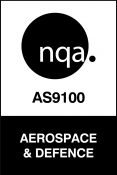If you’re not yet familiar with the manufacturing method known as metal stamping, you’ve come to the right place to learn! Dayton Rogers pioneered the practice of short run metal stampings back in 1929, and we have now been in the metal stamping industry for almost a century.
One of our greatest contributions to metal stamping is our development and distribution of The Original Metal Forming Design Handbook- Cost Effective Design Principles, AKA The Red Book. The Red Book is a comprehensive guide to all the things you need to know when designing a part for metal stamping and other secondary manufacturing methods. In today’s blog we’ve gathered some of the most fundamental design information from the Red Book to share with you all, along with some other design considerations to keep in mind when designing a part for stamping manufacturing.
The first consideration to make when designing a part for metal stamping is the type of material you want your metal stamping to be made from. This selection will rely primarily on the physical and chemical properties of the metal- although in applications where your stamping will be exposed, it might be worth considering the visual appeal of your metal choice as well.
Below are a few of the metals that we stamp here at Dayton Rogers, along with the properties of each that will affect their viability as a metal stamping choice.
Ferrous materials like steel are highly durable, making them a good choice for use in rugged environments or demanding applications. Steel and stainless steel parts are commonly selected for metal stampings as steel is easily obtainable, takes well to forming, and is also compatible with secondary fabrication processes such as welding. Stainless steel in particular is a good choice for applications where corrosion resistance is critical.
Aluminum is known for its malleability, which makes it a great candidate for metal stamping manufacturing. It is also available at a fairly low cost compared to other metals. This lightweight material is a great selection for uses where weight is an important factor, such as in the automotive and aerospace industries. Aluminum is also a great conductor of heat and electricity, should your project call for either.
Another malleable family of metals, copper and copper based materials make excellent stamping candidates. Copper is resistant to corrosion, especially after going through stamping manufacturing processes. It is highly conductive and can be alloyed with many other materials to achieve a desired set of properties.
While brass is another copper-based alloy, the addition of zinc makes it a significantly harder material. This makes it well suited for stamping applications that demand a higher impact resistance compared to other copper alloys.
While titanium’s low density and high strength make it an excellent material for aerospace applications, that same strength also serves as a drawback in stamping manufacturing. Stamping titanium is something that can be done, but it commonly requires secondary fabrication methods to achieve the desired result.
Once you’ve selected the right material for your intended application, you can begin designing a blank for metal stamping! In the context of stamping manufacturing, a blank is the piece of metal that goes through a stamping press to be turned into your finished part. When it comes to designing a blank for metal stamping, there are some key parameters that must be followed.
In metal stamping, material thickness should always be no less than 0.060”. This remains true regardless of material choice.
There are three geometric features that we need to consider: corners, cutouts, and protrusions.
The requirements for corners depend directly on the thickness of your blank material. If your blank is between 0.060” and 1/16”, sharp corners can be kept. This eliminates the need for secondary manufacturing, which reduces costs overall. On the other hand, if your blank material is 1/16” or greater, each corner must have a radius of at least half of your material thickness. So, if your material thickness is 1/16”, or 0.0625”, each corner would need to have a minimum radius of 0.3125” (0.625/2=0.03125).
When it comes to cutouts and protrusions, the minimum dimensions for each are equal so we’ll be covering them together. The width for any cutout or protrusion from a blank can be no smaller than 0.060. The minimum length of the feature is then dependent of the selected width. Whatever width you select, the length of the feature can be no more than 5 times that width. For example, if your design features a cutout of 0.060”, the maximum length of the cutout would be 0.30” (0.060*5=0.30).
Once your features have been selected, the next parameter to define for your metal stamping is tolerance. Depending on the application, tolerance can be critical- or it can be a minor concern.
One thing to keep in mind is that tighter tolerances will give your stamped parts a more uniform quality overall; however, those tight tolerances will also increase the price of manufacturing your metal stamping. We always recommend selecting the widest permissible tolerance range for your application to keep manufacturing costs low without sacrificing the functionality of your metal stamping.
If your metal stamping features punched holes, you will need to account for punch and die clearance in your design. For through-holes, punch and dies are not necessarily the exact same size; there has to be room for clearance between the two as the metal between them is sheared. In metal stamping, our general recommendation is to allow for a clearance of 8-10% of the total hole diameter. However, this can vary depending on the type of material you choose, such as if your material is ferrous or nonferrous.
It’s important to consider that the punch side and the die side will not necessarily be equal in diameter. The difference in the two will again depend on the material you select, namely on its shear strength. If your stamping requires a hole with a very tight tolerance, consider designing a smaller hole for stamping manufacturing, then using secondary fabrication methods to machine it to size.
Whether you have a design that needs refinement or need to start from the ground up, Dayton Rogers has the expertise to design a cost-efficient metal stamping that meets your project requirements. We remain committed to creating solutions that are integral to your success, and for nearly a century we have demonstrated that commitment with our comprehensive metal forming techniques. That’s the Dayton Rogers difference.
Dayton Rogers has led the metalforming industry for more than 90 years, using stamping and fabrication expertise to create a wide array of parts for multiple applications. Our metal stamping and metal fabrication services create unique solutions that are integral to your project’s success. If you’re ready to discuss our available metalforming methods in a free consultation, don’t wait. Call today to speak to one of our metalforming experts about your project or schedule an in-person meeting.
Want to learn more about metal stamping and fabrication? Get your FREE copy of the Design Principles Red Book. This Design Principles booklet describes the various common conditions that occur in the fabrication of parts.








8401 West 35W Service Drive, Minneapolis, MN 55449-7260 1-800-677-8881
© 2022 Dayton Rogers. All rights reserved